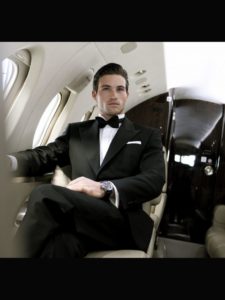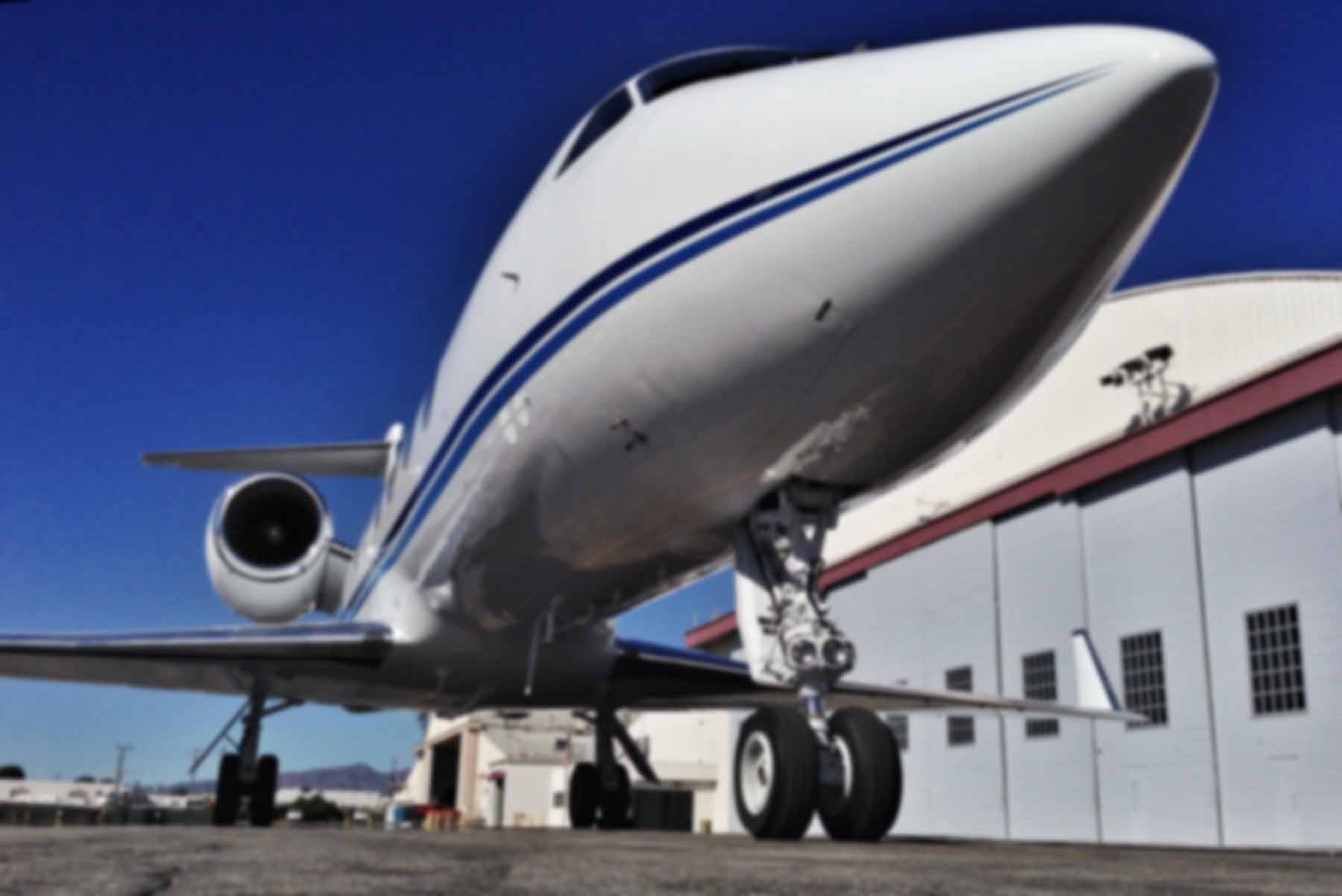If I had to put together a “top 10†list of work-related questions fired at me by friends and family, many of the queries would be unsurprising:
- “Flown anywhere exciting lately?†(Does home count?)
- “Do you need a second pilot, or can you fly the airplane by yourself?†(The G-IV requires two pilots)
- “Can you take your wife or kid along?†(Not unless it’s an empty leg.)
- “How many people can it seat?†(It’s certified for up to 19, but most interiors are setup for 13-15 passengers)
- “How far can it fly?†(About 4,300 nautical miles, assuming no wind)
- “How high can it go?†(45,000 feet)
- “Can you fly outside the United States?†(The aircraft is capable of operating worldwide, and our OpSpecs allow for that as well)
One of the most interesting questions, at least from my perspective, is whether we have a flight attendant aboard. The answer isn’t as easy as a simple “yes†or “noâ€.
When the airplane is being chartered, a FA is always aboard – primarily for the safety and comfort of the passengers. The safety part is fairly obvious: if a passenger falls ill, a cabin fire breaks out, a ditching occurs, etc. they can focus on the pax while the pilots worry about the flying.
Of course, emergencies of that ilk are as rare as hen’s teeth. The primary role they play in day-to-day operation is ensuring the passengers have a pleasant experience. From serving food and drink to putting on a movie, setting up beds, locating games, card decks, pillows, blankets, and the thousand other items we carry, they’re helping the customers enjoy a first-class travel experience.
If it’s a Part 91 trip being flown by the owner of the aircraft, a flight attendant is not typically needed or requested. On complicated international trips or when the passenger manifest is long, a flight attendant will sometimes be requested even by the owner in order to make the trip run more smoothly.
Over the years, I’ve come to think of corporate/charter flight attendants as the forgotten soldiers of the business aviation industry, which is ironic because they’re the hardest working and lowest paid members of the flight crew.
They often show up long before the pilots do. Charter trips are often beset with complicated and specific meal requests which sometimes even our best caterers cannot accommodate, so they’ll shop for and prep those things themselves. They take the time to research the passengers, determine their preferences, dislikes, allergies, and even decorate the cabin for special events. They deal with brokers, which can be a challenge all its own.
Flowers seem to follow flight attendants like cigarette smoke in a Mad Men episode. You can hardly find one without the other. I’ve flown to the most ill-equipped and destitute third world countries, places were even clean water was a luxury, and somehow the FA will still find a perfect collection of flowers.
The best flight attendants are preppers. They’re the ones you’d want to be with during a zombie apocalypse. They’ll have contingency plans, backups to the backups, special gifts for little kids, and a dozen other things I never would have considered.

But flight attendants get my respect not only because so many of them go above and beyond even the high levels of service expected by passengers – not an easy thing to do – but because they’re dealing with human beings.
That sounds obvious, but think about it: people are unpredictable. Sometimes the folks coming up the air stair are as pleasant as can be. At other times, the passengers have had a rough day and they’re a lot harder to please. As a pilot, when I press a button, flip a switch, or turn a knob, the equipment will respond in a very predictable way. There are no variances. I can bank on specific behavior from the hardware. People are quite the opposite, and as anyone who’s traveled extensively can tell you, living out of a suitcase and changing time zones takes a toll on the body. That fact is as true for the passengers as for the crew.
Flight attendants also take care of the guys up front, usually taking the time to prepare something for the pilots to eat, and frequently checking in with the cockpit to see if we would like a snack or something to drink. I always tell my copilots that I’ve never gone hungry on a Gulfstream, and we probably won’t start today. That’s due to the thoughtfulness and hard work of corporate flight attendants.
They’re also a critical part of protecting the owner’s investment, ensuring the aircraft’s interior stays clean, organized, and stocked. While flight attendants know enough not to eavesdrop or violate a passengers privacy, on that rare occasion when an inebriated or impolite individual gets out of hand, they serve as the captain’s eyes and ears back in the cabin.
On layovers, FAs have often researched the area and know where to eat, what to do, and so on. I recall a last minute trip to the World Cup in Brazil where our flight attendant was so determined to get us tickets to one of the matches that she stayed up all night just to keep searching for a decent trio of passes to a sold out game between Switzerland and France. Sure enough, she hit pay dirt and the next day we found ourselves surrounded by 50,000 rabid soccer fans at one of the world’s most sought after sporting events.
I’d like to think a good pilot will recognize and take care of the flight attendant, ensuring they are not abused by the passengers and receive support in dealing with the FBO, stocking the aircraft, lifting heavy objects, or even little things like walking them to their car at night or helping them shop for trip-related items when we are on the road.
We’re a team, and I always feel better when I know a good flight attendant is part of the crew.

Story told to me: I know the flight attendant. The wrong side of the world a long time ago-NO HANDLERS YET. Guns out pilots held on ramp. The flight attendant stepped into action. When she walked down the aircraft steps-blond and in her short skirt things were about to change. When she walked up to the situation words were being spoken in a foreign language–and you know who they were talking about. When she spoke to them in there foreign tongue the guns were put away. She would never tell the crew what she said to the gun tooting guards. Flight attendants are worth their weight in gold
The cavalry to the rescue! Great story, Joe. I’ve come to realize there are many hidden talents in each of us, and that includes the flight attendants. Usually it’s nothing quite as dramatic as a potential shoot-out at the OK Corral, but sometimes we don’t appreciate those things until the FA starts speaking Portuguese on a foreign ramp somewhere.
This was a really interesting post! I never knew flight attendants could be so important. It’s another one of those “flying but not actually flying” jobs to consider . . .
Indeed, there are many of those aviation-but-not-flying jobs out there. For every pilot, there are probably ten other people working in the industry as mechanics, dispatchers, flight attendants, line service personnel, accountants, managers, instructors, and so on.
Great post Ron,
I agree, I think so many people have no idea that corporate/charter flight attendants exist or what they do. I was in a meeting recently where a few large cabin charter flight attendants were present, and hearing their feedback I was amazed how much they go out of their way to make sure the guests are taken care of.
As far as aviation questions go, the one I got asked most frequently was when I was flight instructing on the west coast. “How much would it cost to fly a 172 to New York and back?” some of my financially savvy friends would ask in an effort to find a deal that even Southwest can’t beat. “About as much as it would cost to airline around the world:)” I would usually answer. I don’t think I was that far off, too.
What an interesting question. In 2500 hours of dual given, I don’t recall ever being asked that one! But just for grins, I did some a few quick calculations and figured it would take about 19 hours of flying (at an average of 110 knots) to fly a Skyhawk one way from L.A. to N.Y.
Given the rental cost of a C172, it would set you back $5-6,000 for such a round trip. I don’t know what it costs to fly around the world, but if you’re in coach I bet you could do it for that price. Or you could fly the lowly transcon round trip… in first class.
Funny how friends who are financially savvy would overestimate the cost by such a large degree. They could probably ballpark what Southwest would charge to fly that route without even looking it up. Yet change the aircraft type and suddenly they’re orders of magnitude off base.